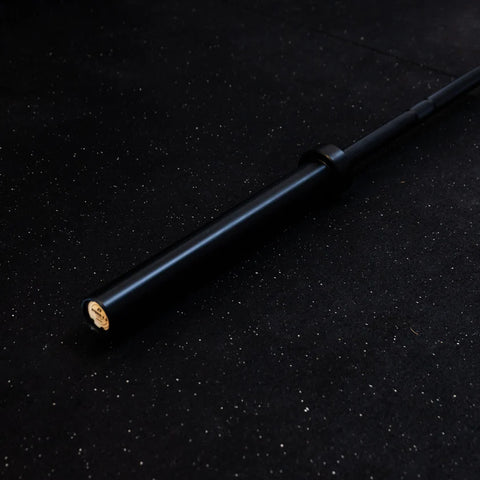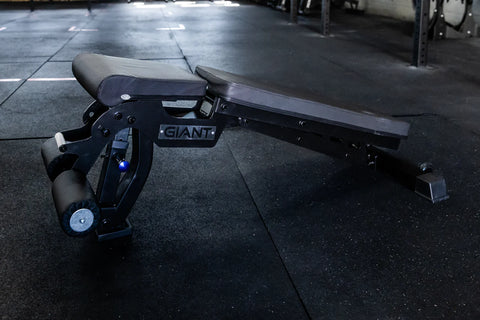Types of barbells and how to use them correctly
Whether you’re a fitness enthusiast, or just getting started on your weight lifting journey, it’s important to familiarize yourself with the different types of barbells. The right barbell can help you maximize your results and avoid injury.
The Basics of Barbells
A barbell is a long metal bar with weighted metal sleeves at either end. The design is simple, but it is an incredibly versatile tool in the gym and it’s important to understand the key differences to find the barbell that’s best for you.
Types of Barbells
Standard Barbells

The standard barbell is about seven feet long and weighs around 45 pounds. It is your go-to for classic moves like bench press, squats, and deadlifts. They provide stability and balance to your lifts, making them a solid choice for athletes at every level.
How to Use Them:
- Bench Presses: Space your hands evenly and grip the bar to keep it steady. Lower the barbell to your chest and then press it back up.
- Squats: Center the barbell between your shoulders, keep your back as straight as possible, and bend your knees like you’re about to sit in a chair.
- Deadlifts: Stand with your feet hip-width apart and put the bar over your feet. Keep your back as straight as possible, bend your knees, grip the bar and push through your heels to stand up.
Olympic Barbells

If you’re looking to try more adventurous lifts, the Olympic barbell might be a good option for you. Olympic barbells feature rotating sleeves to help ease the stress on your wrists and forearms during Olympic lifts. They are super durable and built to handle heavy weight - perfect for lifters performing a snatch or clean and jerk.
How to Use Them: Wrap your fingers and thumb in a hook grip, and let the bar’s rotation work to reduce wrist strain and add a smooth, controlled spin to your lifts. Start with lighter weights to perfect your form and gradually increase the load as your technique improves.
Hex Bars

Hex bars, or trap bars, feature a hexagonal shape that you stand in the middle of, allowing for a more neutral grip and a more upright posture during lifts. It helps alleviate strain from your back and is a perfect addition for lifters looking to diversify and maximize their lifts.
How to Use Them: Step in shoulder-width apart and bend at the knees to lower yourself to grasp the handles. As you lift, focus on driving through your heels and keeping your chest up. This neutral grip and posture can significantly reduce lower back stress compared to traditional deadlifts.
Curl Bar

The curl bar is a type of specialty bar designed with a wavy shape. The curves in the bar are specifically placed to help promote a more comfortable grip and reduce the strain on your wrists and elbows during curls and other exercises that target the biceps and triceps.
How to use them:
Select a grip that feels natural and allows for a full range of motion without wrist discomfort.
- For bicep curls, keep your elbows stationary at your sides and lift the bar towards your chest. Avoid swinging your back or using momentum.
- For tricep exercises, such as skull crushers or overhead extensions, ensure your movements are controlled and focused, keeping the elbows fixed in position to isolate the triceps.
Squat Bar

The squat bar is designed to help you squat deep with heavy weight without compromising form. This bar offers an added level of stability thanks to the way the weight is distributed and the grip padding keeps the bar in place so the bar won’t slide around on your back.
How to use them:
Set the bar on a rack at mid-chest level. When you're under the bar, position it across your upper back, slightly below the neck, gripping the bar wider than shoulder width. Keep your back straight and chest up as you unrack the bar by straightening your legs. Step back, position your feet slightly wider than hip-width apart with toes slightly pointed out, and squat by bending your knees and hips, keeping the weight on your heels.
Deadlift Bar

The deadlift bar is a bit thinner than an Olympic barbell, and offers a bit more flex. It is designed to promote speed so you can get the bar off the ground and initiate your heavy lifts.
How to use them:
Start with the bar placed on the ground and stand with your feet hip-width apart, with your shins close to the bar. Bend at the hips and knees to grip the bar, keeping your back flat. Ensure your grip is strong and your chest is up. Drive through your heels, lifting the bar by straightening your hips and knees. Keep the bar close to your body throughout the lift to maintain optimal leverage and reduce the risk of injury.
Swiss Bar
The Swiss Bar, also known as a multi-grip bar, is a versatile and unique piece of strength training equipment. It features multiple grip positions, usually including neutral grips (palms facing each other), which allow the user to target a variety of muscle groups while minimizing stress on the shoulders and wrists. The Swiss Bar is beneficial for individuals with shoulder discomfort because it offers more comfortable positions for a wide variety of movements.
How to use them:
To correctly use a Swiss bar, select the grip that best matches your exercise and target muscles. For presses, the neutral grips can help reduce shoulder strain. Ensure the bar is positioned correctly in the rack before lifting and that your hands are evenly spaced in the desired grip slots. Keep your movements controlled, focusing on engaging the target muscle groups while maintaining proper form to maximize the benefits and minimize the risk of injury.
Cambered Bar
The Cambered Bar features unique bends allowing for a deeper range of motion and a bit of instability for emphasized work on your stabilizing muscles. This bar features a bend or "camber" in the middle, which can help reduce shoulder strain during squats by allowing a lower hand position. For squats, the unique shape allows for a deeper descent without putting strain on your lower back. The Cambered Bar is excellent for athletes looking to overcome plateaus, enhance their lifting technique, and target muscles from new angles.
How to use them:
Ensure the camber is positioned so that it allows a deeper squat without compromising form. The bar should rest securely on your shoulders, with your hands gripping the bar firmly for stability. For bench presses, the cambered bar will challenge your stability, so focus on controlling the bar's path and engaging your core throughout the movement.
Log Bar
The log bar is a staple in strongman training. It is a cylindrical barbell designed to mimic the shape of a log. It's typically used for overhead pressing movements but can also be utilized for deadlifts, rows, and even bench press. The bar's distinctive shape forces the user to engage core muscles for stability, significantly enhancing core strength and stability. The neutral grip handles inside the log help reduce strain on the wrists and shoulders, making it a safer option for lifters with joint issues.
How to use them:
Correct use of a log bar involves adjusting to its size and shape. For overhead presses, squat down to lift the log bar from the ground or a rack using the neutral grip handles. Position the log at your chest, ensuring your elbows are under the bar. Press the bar overhead, extending your arms fully. Keep your core engaged and your body stable throughout the movement. Practice with lighter weights to get accustomed to the log bar's unique balance and handling before progressing to heavier loads.
Storing Your Barbells
Proper storage is key to maintaining the longevity and safety of your barbells.
A barbell storage rack not only keeps your training area tidy but also prevents damage to your barbells and injury to yourself or others.
Wrapping Up
Understanding the different types of barbells and their specific uses is fundamental for weight lifters at any fitness level. Each barbell type offers unique benefits and is designed to enhance your performance in different exercises. By selecting the correct barbell for your workout, you can ensure a safer, more effective, and enjoyable lifting experience.



